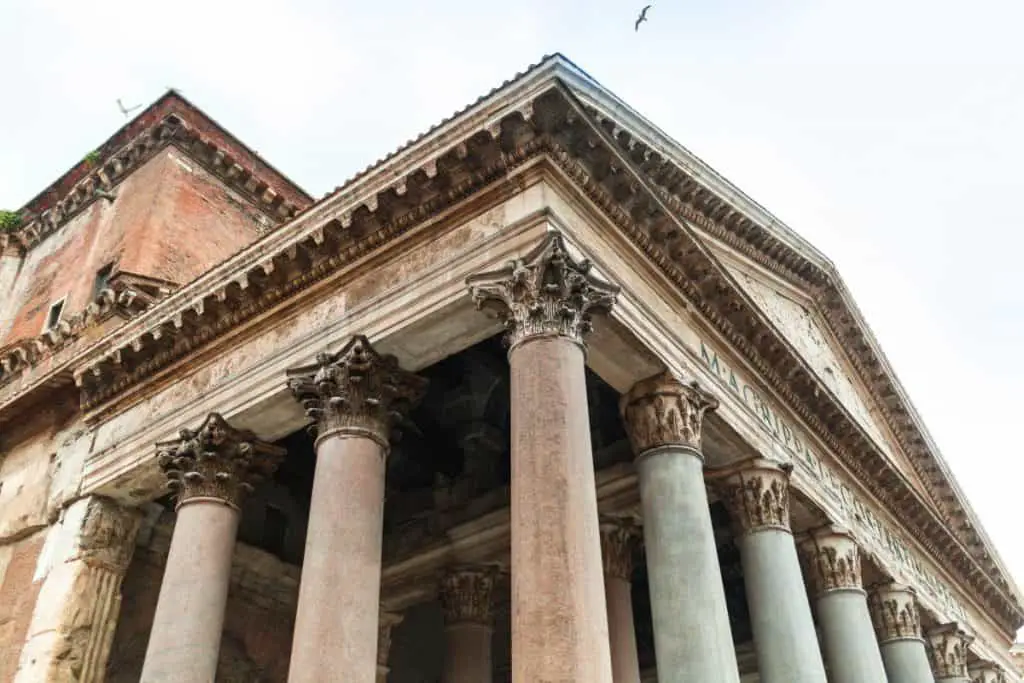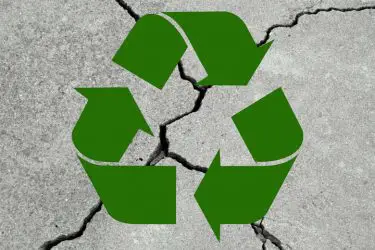Concrete has been around for a very long time and lasts longer than the civilizations who leave it behind. The history of concrete shows the progression of humans, and the lengths were gone to in order to produce solid historical structures.
Concrete dates back to structures as early as 6500 BC in Syria and Jordan. It was highly used by the Egyptians and the Romans as well. During this time they crushed crude materials like gypsum, limestone, mud, or other materials. Refining the process through time has made our modern concrete today.
Concrete today is a result of thousands of years of trial and error. It is such an important substance today because it has been put through the test of time. Many civilizations have used it, and because of them, we are able to build with it as well.

Table of Contents
The Earliest Concrete In Syria and Jordan
Concrete flooring, homes, and underground water storage were found and still exist in the Middle East. These were made by nomadic Arabs from the Nabataea or Bedouin tribes who lived in the desert. They made them for a source of water for their herds and families.
Egyptians – Building Wonders Of The World With Concrete
The Great Pyramids of Giza stand today as a result of the Egyptians use of concrete. The most common thought is that the concrete they used was to bind pyramid blocks together. They used a mixture of mud and straw which enabled their materials to stick together, and eventually last till today and into the future.
An alternative thought about the construction of so marvelous a structure is also to be considered. According to Alex Wright and Joseph Davidovits, concrete could have played a much bigger part in the creation of the Pyramids. The concrete they may have used is called Geopolymer, which is “made from crushed limestone, clay, water, and lime, a highly alkaline (the opposite of acidic) activator that caused the crushed limestone mixture to reconstitute into a man-made stone.” Source.
Romans- Implementing Concrete Into Their World
Once able to look at the amazing structures left behind in history, one cannot forget the astonishing structures left by the Romans. The Pantheon is a prime example of their use of concrete. While civilizations before them had used concrete to build, they were the first to use it on a more widespread scale. It was used in many structures they created. The concrete used by the Romans was made up of volcanic ash, lime, and seawater. They would then put the mixture into wooden frames until it was able to harden.
The cement used by Romans has lasted for more than 2,000 years. The secret to their success in structures was the materials they used to make the cement. Their mixture reacted naturally with the earth to become not just durable, but stronger year by year. Today, our concrete deteriorates over time through erosion and unwanted chemical reactions, but it was not so for the Romans.
To get such strong concrete they “took advantage of a chemical reaction [they] may have observed in naturally cemented volcanic ash deposits called tuff rocks.” Source. They used what circumstances they were in to produce a concrete that reacts well with the sloshing seawater that has been around these structures since their creation.
Some Minor, Yet Important Milestones
After the fall of the Roman Empire, the production and progression of concrete went backward. People lost the procedure for such a strong substance and did not use cement often again until 1414 when the technique was recovered through a manuscript.
In 1756, John Smeaton attempted to build the Eddystone Lighthouse which leads him to new concrete techniques discoveries. He is known as not only the father of civil engineering but he also found that hydraulic lime was useful in concrete. He also found the mixture he made of clay and limestone could set up underwater, making his lighthouse possible. His discoveries were later adapted by other lead discoverers in concrete, like Joseph Aspdin.
Portland Cement – Today’s Concrete
In 1824, Joseph Aspdin created what we now know today as Portland Cement. He patented Portland Cement on October 21st of that year, after a long history of being a bricklayer, British Mason, and plasterer. To make Portland cement he heated limestone and clay at very high temperatures, then let it cool while grinding it and adding water to make a strong cement.
Aspdin also knew something about the importance of a good name. “He named it ‘Portland cement’ after Portland stone, (a famous type of stone often used for building work, which was quarried on the island of Portland off the coast of Dorset) because it was a similar color and almost as hard when dry. This was seen as a good marketing tactic, as it linked his product in people’s minds with a well-established and popular product.” Source.
Aspdin’s concrete, while a sensational discovery, was mainly used for industrial buildings until around the 1850s. Only then did it become an integral part of home construction. This took place when Joseph Monier invented reinforced concrete. The first concrete home was built in 1854 and since then, many have been completed.
Where To Get Concrete Today
Concrete is now an integral component of our construction, cities, and transportation systems. As a matter of fact “five billion tonnes of concrete are used around the world each year.” Source. Not only did civilizations of the past find it important, but we do today as well.
Today, we as individuals do not have to go through the painful process of heating, mixing, and testing ingredients. We can find concrete at Home Depot, or our local hardware store. It can even be delivered right to your home. Options expand from Quikrete to Cemex and beyond. We also are not required to do it our self but can rely on the expertise of others in building structures with concrete.
Now that we know the history of concrete and where it came from, we are better able to see the time it takes to perfect and create something foundational to our modern day buildings and structures.





